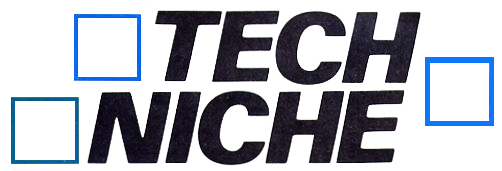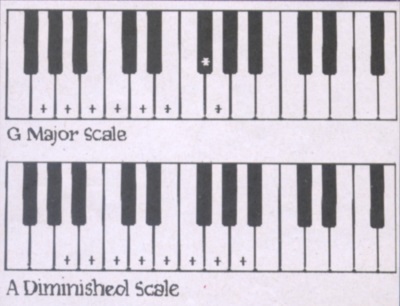


A diminished and inverted JON ‘NORMAN’ BATES stabs Simon N Goodwin in the shower — no, sorry, discovers Tectrics’s computerised dictionary of chords, and previews software for the Ram Music Machine
I PROMISED that this month I’d review synchronization devices for MIDI and multitrack tape recorders.
Well... sorry an’ all that, but the things I wanted to compare and contrast have not yet materialised at the Bates Motel. As we go to press within about two seconds of my fingers flashing (should that read ‘fumbling’?) over an ageing word processor, I guess I’ll have to get on the phone, engage Nag Factor 9 and encourage all the long-holiday merchants to stump up review products.
One software house that didn’t leap off to spend a fortnight on the floor at Gatwick-On-Sea was Tectrics. After spending long hours working in a recording studio, the brains behind Tectrics spotted, as several other companies have, a need in the market for low-cost, effective and useful music software. Not all of us have the cash or desire to sptash out on several hundred pounds’ worth of 16-bit hardware and allow the Spectrum to gather dust in the corner of the studio/bedroom.
First off Tectrics’s production line is a chord computer — Compuchord. The concept is simple. If you’ve ever bought sheet music of a Top 20 song, say, you will have seen above the lines the shorthand chord symbols: C7, Gdim, A6, (Z demented) and so on. Plonking your way through these is an arduous task when you need lots at chords to play the piece and you know two chords — one is C and the other one isn’t!

Contemplating the essential harmony of the universe with Techtrics’s Compuchord
One possible solution is to buy a chord book for either guitar or keyboard, usually called something bright like 5,000 Essential Chords. This will frustrate you quite a lot — I know, I’ve tried them. There are also nice miniature chord computers with LCD; very smart and very pricy. In between these options is Tectrics’s Compuchord.
Load up and you get a keyboard display. Enter the name of the chord you want, and it appears on the screen in the form of asterisks on the correct notes. The choice of chords is very comprehensive, though not all-encompassing, and quite enough for the average player to cope with. What’s more, they’re quite accurate, with no clangers dropped.
Compuchord will cope with major, minor, diminished, augmented, sixth, seventh and ninth chords and any crossbreed of those categories. Quite rightly, it defaults if you try to put in a chord that isn’t used, such as a diminished sixth (which only exists in theory). It can invert any chord — ie rearrange the notes — through its three or four inversions, and just for kicks you can get it to run up the scale onscreen.
All in all, Compuchord offers well over a thousand chords displayed in a very easy-to-understand fashion. I’m surprised it hasn’t been done before; if it has, it didn’t get into this column or any other that I can recall.
I was reviewing from the first version, and the upgrade will be available by the time you read this. This should have a guitar-chord display and sound all the notes, and will MIDI-connect with any instrument via any interface, so you can search for the right chord for your own compositions.
Compuchord runs on 48/128 and is available for the reasonable sum of £8.99 (including postage and packing) from Tectrics Studio. Tectrics will be releasing several interesting MIDI programs, including MIDI delay, in the near future — look for reviews in this hallowed section.
There must be many readers who bought the Ram Music Machine and are now eagerly awaiting the latest software from Ram/Flare. Well, there ain’t gonna be any. It seems they only see profits in selling hardware and not in the upgrade software; I’ve also have heard mutterings that Ram’s OTT ad campaign for the Music Machine (double-page full-colour ads in lots of music magazines) cost it several arms, legs and other appendages.
But fellow Tech Nicheian (what a mouthful) Simon N Goodwin (another mouthful) has already mentioned the Ram Users club and magazine run by Al Straker. This is officially sanctioned by Ram, which is only too happy to see you, the user, develop your own software. I reckon its Ram’s loss, not yours.
The club’s first fruits are now available; they were on show at the ZX Microfair in August, and full reviews from me will follow. But as a taster try these two...
One is an eight-track MIDI realtime and step-time recorder called Ramtrack, £15 pounds from JB Software (nothing to do with me); the other is a rather smart £9 Sample Editor from Quasar Software, which goes into much greater detail than the sampling section of the Music Machine. It enables you to loop and hold samples with pretty well glitch-free results.
There are also rumours of 16-track recorders and conversion routines to make software intended for other interfaces run on the Music Machine and vice versa. You can get more info from the Ram Users’ Al Straker.
Okay, that about wraps it up — next month we’ll get round to synchronicity, and full reviews of the products mentioned above. In the meantime, send your enquiries to me at the usual CRASH PO Box address...